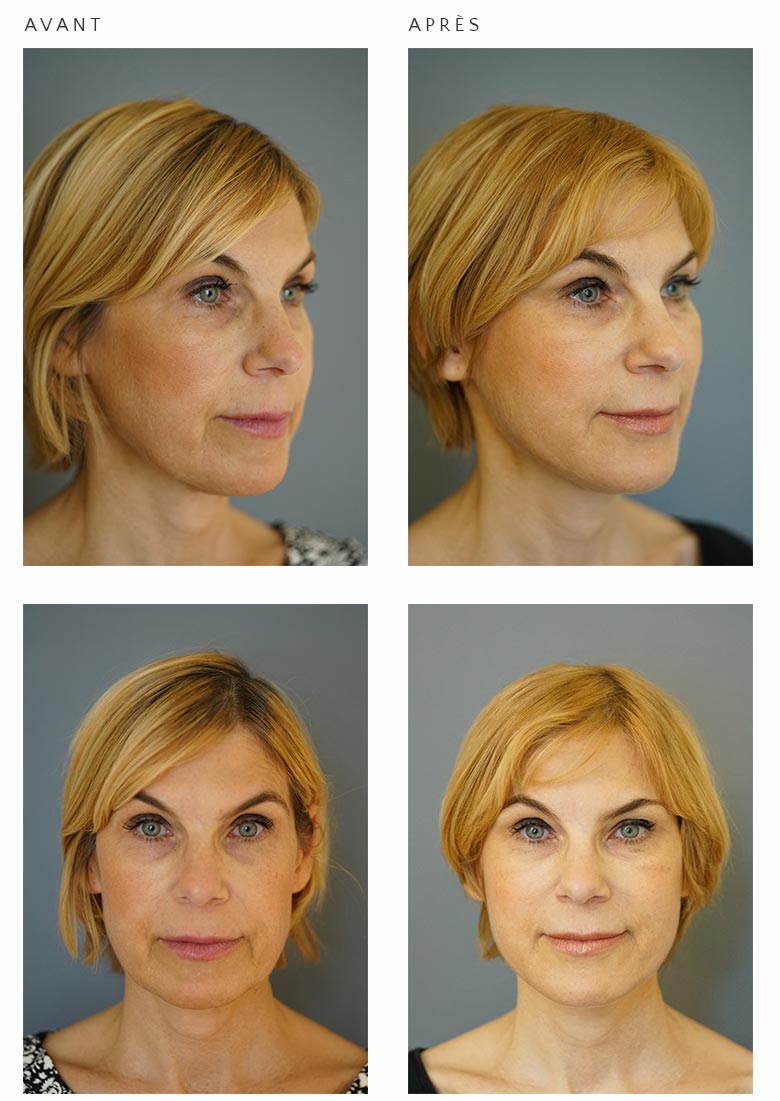Facial sagging
Barbed & SUPPORT threads
Surgery offers several different types of face-lift procedure to lift sagging tissue in an upward direction. We now have a good knowledge of the associated results and limitations.
Aesthetic medicine, on the other hand, offers a new, simpler technique that consists of introducing, under local anaesthetic, threads with a particular structure in order to lift the tissue upwards.
These barbed threads (or Russian threads), made of non-absorbable polypropylene, have nothing in common with the notoriously ineffective gold threads, and do not have the "volume" effect of GORETEX® threads or of braided threads. Significant progress has been made with Russian threads over the last few years and recent techniques (X shaped implantation or EASYLIFT ®) are now giving results that are indisputable. Unlike surgery, thread techniques are reversible and they do not require any cutting of tissue, which is crucial in order to preserve normal vascularisation.
INDICATIONS
- Sagging of the eyebrows, which is different to eyelids with excess skin.
- Sagging of the cheekbone area which worsens the nasogenian folds and gives the face a tired look.
- Sagging of the cheeks which leads to jowls and which disrupts the oval of the lower face.
- Sagging of the neck associated with that of the jowls.
IN PRACTICE
Putting the threads in place, which is done under local anaesthetic, takes approximately two hours. Bruising can be visible in certain patients, especially those that are predisposed. There is always the possibility of a haemotoma, although this is very rare with EASYLIFT®.
A sensation of painful pressure can be felt for several days, normally fading away after 3 to 10 days.
Finally, over a period of several weeks, a fleeting tingling sensation, at times quite sharp, will be felt, especially in the area of the temples and the scalp.
It is therefore recommended that a week of rest should be taken after the treatment.
COMBINED TRATMENTS
Once the sagging has been treated, the tissues can be given additional volume using volume-enhancing injections.
A facial peel is also an option, for improving the tightness of the surface of the skin (EXOPEEL® facial peel).
A face-lift can be performed without any problem at a later stage if it becomes necessary; the presence of the threads is not an obstacle to performing this, in spite of the negative opinion of a few people.
CONCLUSION
This method, which is very safe and resonably priced given the results that are achieved, is a novel solution, although this novelty relates to the more recent versions - EASYLIFT® or X - for a large number of patients who are experiencing sagging of the features but who do not wish to undergo surgery or general anaesthetic.
It allows action to be taken as soon as the face starts to have a sad or tired look (due to the sagging of the cheekbone area), whereas conventional surgery has limited efficacy in this area and only more complex and little-practised face-lift techniques can give the same result. It is worth noting that it gives very good results with men as well.
